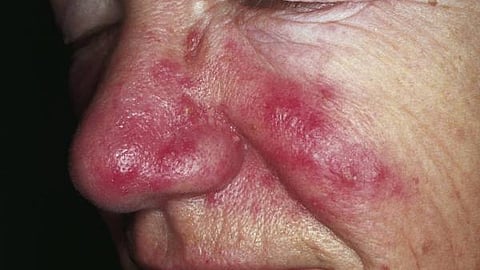Rosacea is a common skin condition that affects at least 14 million U.S. adults and commonly appears as a tendency to blush or flush more easily than others. While treatable, symptoms, such as skin thickening and eye problems, can often be uncomfortable and affect people’s quality of life.
“With rosacea, there can be many triggers that will worsen symptoms or cause a flare-up,” said Lycia Thornburg, MD, FAAD, a board-certified dermatologist in Rapid City, S.D. “It’s possible to control your rosacea and even prevent it from getting worse by recognizing and avoiding triggers, ranging from alcohol to sunlight to the skin care products you use.”
Signs and symptoms of rosacea include:
Flushing and redness in the center of the face
Swollen skin
Skin may be very sensitive, sting, or burn
Visible broken blood vessels
Acne-like breakouts, usually where the skin is very red, that tend to come and go
Oily skin


